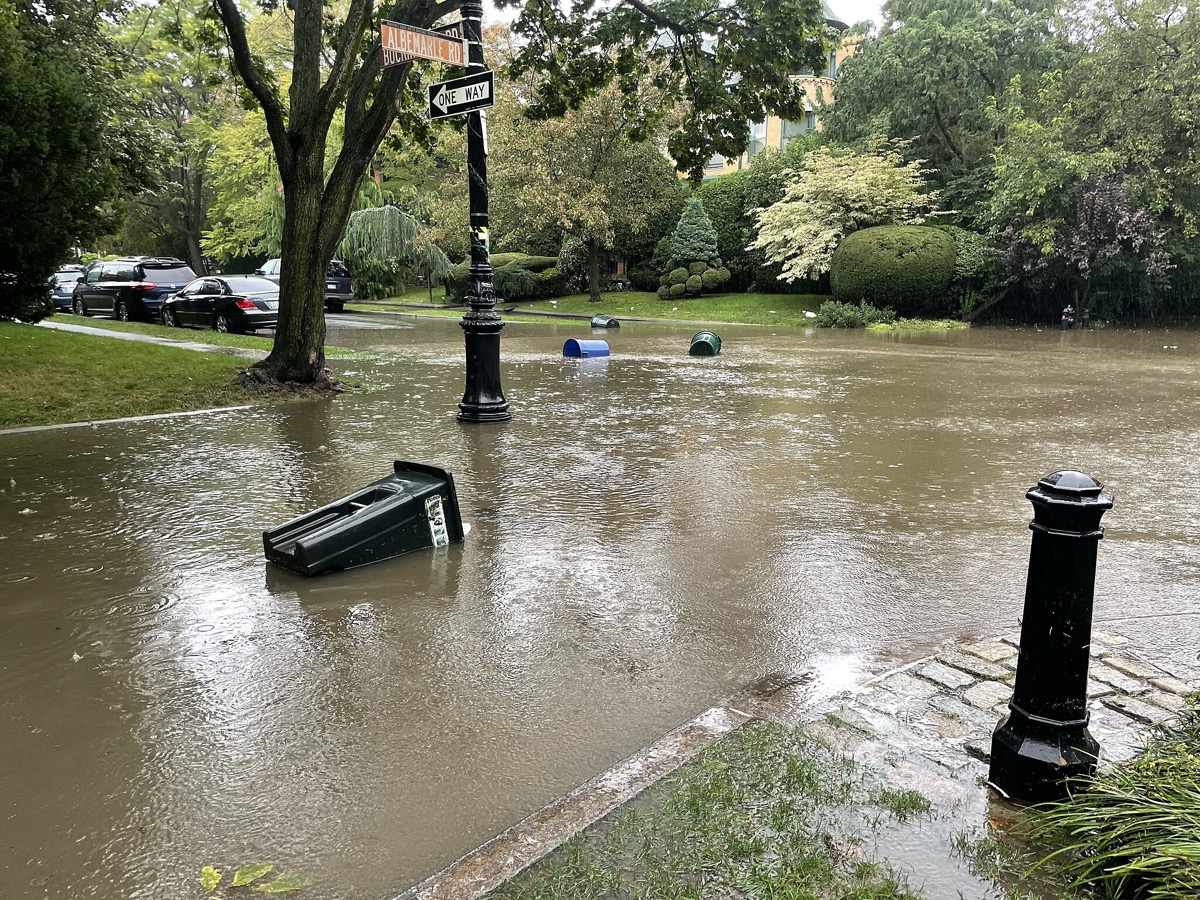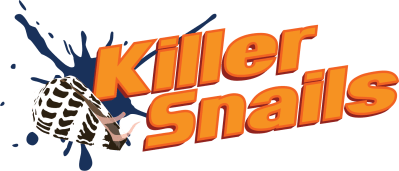Grade Level
3 - 8
minutes
15 min - 1 hr
subject
Life Science, Earth Science
Activity Type:
Engineering design challenge, water pollution, interactive
In September 2023, parts of New York City were flooded when heavy rainfall from record-breaking storms hit the area. Nearly nine inches of rain fell that Friday afternoon, halting subways, trains, and air travel, stranding drivers, and causing widespread damage. Scientists have warned that climate change may make such incidents more frequent, so city planners must rethink how they design water systems.
Why do some neighborhoods flood when it rains? What happens to water after it goes down the drain? And what does that water carry? How does so much plastic pollution end up on shorelines? Could these things all be connected?

In this activity, you will learn more about how water connects people and nature in some unexpected ways. Using an interactive model, you’ll investigate how cities use and dispose of wastewater, and what happens to water after it goes down the drain. The key is to identify sources of pollution and design strategies that individuals and communities can use to combat flooding and pollution. However, all designs have tradeoffs. As you make changes in a city, your choices can simultaneously have positive and negative effects.
Can your sewer system design have predictable benefits and consequences? Let’s find out!
Cities Are Turning Flood Water Into Freshwater
Investigating Community Water Systems
First, examine the parts of a water system. Starting with 1, tap on each glowing number in the graphic below to explore how the water you use at home gets to you, and what happens after it goes down the drain. As you explore the map, click on the sound icon 🔊 to hear the text read aloud, and click on underlined words to see their definition.
Water from natural water systems like a lake is transported to a water treatment plant and then to your home. The water you use in your house combines with water from storm drains and goes into an underground sewer, then to a sewage treatment plant, and finally back to nature.
Water goes on a long journey! Let’s see it in action.
The Water Flowing Through Your Home
The sewers in your neighborhood need to be able to handle the water you use and any rain from storms. Find out what happens during heavy rain! In the interactive window below, drag the white triangle from left to right to change the amount of rain or water used. Try a few different combinations and look closely at what happens to water flowing through the system.
Think about what you observed.
- What happens when the sliders for both rain and water use are moved all the way to the maximum?
- Did the sewer contain rainwater, sewage from the house, or both?
- Where did the water in the sewer end up?
Now imagine if there was more than one house in your neighborhood.
The Water Flowing Through Your Town
What happens if more people move to your neighborhood and build more homes? Congratulations, you have a town! If the sewer system stays the same, how might that affect the water flow?
Repeat the experiment with the town scenario below. Once again, drag the white triangle from left to right to change the amount of rain or water used. What happens if you set both water use and rain to the max?
The video below shows one intersection in Brooklyn on September 29, 2023, when a historic rainstorm occurred in New York City. Notice the water coming up from the storm drains and manhole covers in the middle of the street. Where do you think that water came from? How is this similar to what you saw in the interactive investigation above?
Your Town With A Combined Sewer Overflow
A Combined Sewer Overflow (CSO) system combines wastewater from homes and rain water from storms in the same pipes. These sewer systems stop floods by letting the extra wastewater overflow at an outfall instead of on the street. This kind of sewer system was built in the 1800s, but over 700 cities in the U.S. still use them, including New York City.
Try the experiment again. This time, your town will have a CSO system. Carefully watch where the water goes. Change the water use and rain levels to see how they affect water flow.
Think about what you observed.
- When it rains heavily and people use a lot of water, where does the water in the sewer go?
- Describe one good thing and one bad thing about the CSO system.
What Happens When Your Town Grows?
Wow, your town is getting bigger and people are building more homes, apartments, and businesses. Congratulations, you have a city! How will all those extra people affect the sewage when it rains? Let’s find out. Adjust the water use and rain once again. Pay careful attention to how much wastewater flows from the CSO into the river as the town grows.
When the CSO system overflows, it brings wastewater from homes, litter from the street, and pollution like motor oil into our waterways. The sewage may contain bacteria and viruses that can make people sick, pollutants that affect our water, or nutrients that can affect fragile ecosystems. Each year in the U.S., 850 billion gallons of diluted sewage are released into waterways, and that sewage can travel for miles.
Creating Sewage Solutions For Your City
Combined sewer overflow (CSO) systems take wastewater from homes and rainwater from storms to water treatment plants to be cleaned. When it rains and the system gets overwhelmed, CSOs overflow into waterways. This helps stop flooding in neighborhoods, but untreated sewage, litter, and other substances can pollute waterways, even if they’re far away.
To reduce the negative consequences of CSOs, people can take action! Some solutions include:
- Reducing litter so rainfall doesn’t carry it into the CSO system.
- Building green infrastructure like rain gardens and green roofs to soak up rainfall.
- Conserving water when it’s raining so the system doesn’t get overwhelmed.
Use the actions above to improve your city. In the interactive window, tap each button to try a solution.
Think about what you observed.
- How did the three solutions help the city?
- Are there other solutions you can think of?
- How would you design a city to avoid flooding and reduce wastewater and pollution?
Will The Seine Be Clean Enough For Olympic Swimmers?
Want To Learn Even More?
Now that you’ve learned the basics about how water journeys through sewers, expand your knowledge with these links and activities.
- Is there a CSO outfall near where you live? In the U.S., you can find out whether your city has CSOs using the EPA’s interactive map.
- Combined Sewer Overflows (CSOs) can affect water quality and the recreational use of local water bodies. Learn more about what cities like New York are doing to improve the health of our local waterways.
- Sewage from CSOs can pollute coastal ecosystems and threaten human health, so beachgoers are looking for ways to protect coastal watersheds.
- One of the best ways to address pollution from CSOs is to create green infrastructure that filters and absorbs stormwater. Discover ways communities are protecting the environment with this kind of infrastructure.
- Different ecosystems have different needs. Explore how people are addressing these challenges worldwide, from China to Texas.
NGSS Standards:
- ETS1-A Defining Engineering Problems
- ETS1-C Optimizing the Design Solution
- ESS3-C Human Impacts on Earth Systems
K–12 Environmental Education: Guidelines for Excellence
- Strand 1 (Analysis and Interpretation Skills): A, C, E, F, G
- Strand 2 (Environmental Processes and Systems): 2.1 A, B. 2.2 A. 2.3 A
- Strand 3 (Skills for Understanding and Addressing Environmental Issues): 3.1 A, B, C
- Strand 4 (Personal and Civic Responsibility): B, C
- Download Guide
Credits:
Lesson by Corinne Brenner and Killer Snails
Developmental Editing by Sandy Roberts
Copyediting by Lois Parshley
Digital Production by Sandy Roberts
 Killer Snails is an education technology company that specializes in creating immersive, science-inspired, game-based experiences that are designed to spark a love of science and supplement classroom curriculum. If you’d like to learn more about WaterWays, please visit the Killer Snails website.
Killer Snails is an education technology company that specializes in creating immersive, science-inspired, game-based experiences that are designed to spark a love of science and supplement classroom curriculum. If you’d like to learn more about WaterWays, please visit the Killer Snails website.
Meet the Writer
About Corinne Brenner
Dr. Corinne Brenner, Director of Learning at Killer Snails, is a researcher and learning scientist. Corinne’s research interests include applying quantitative methods to understand human behavior, impact evaluation, and examining the affordances of immersive technology for education and entertainment.
